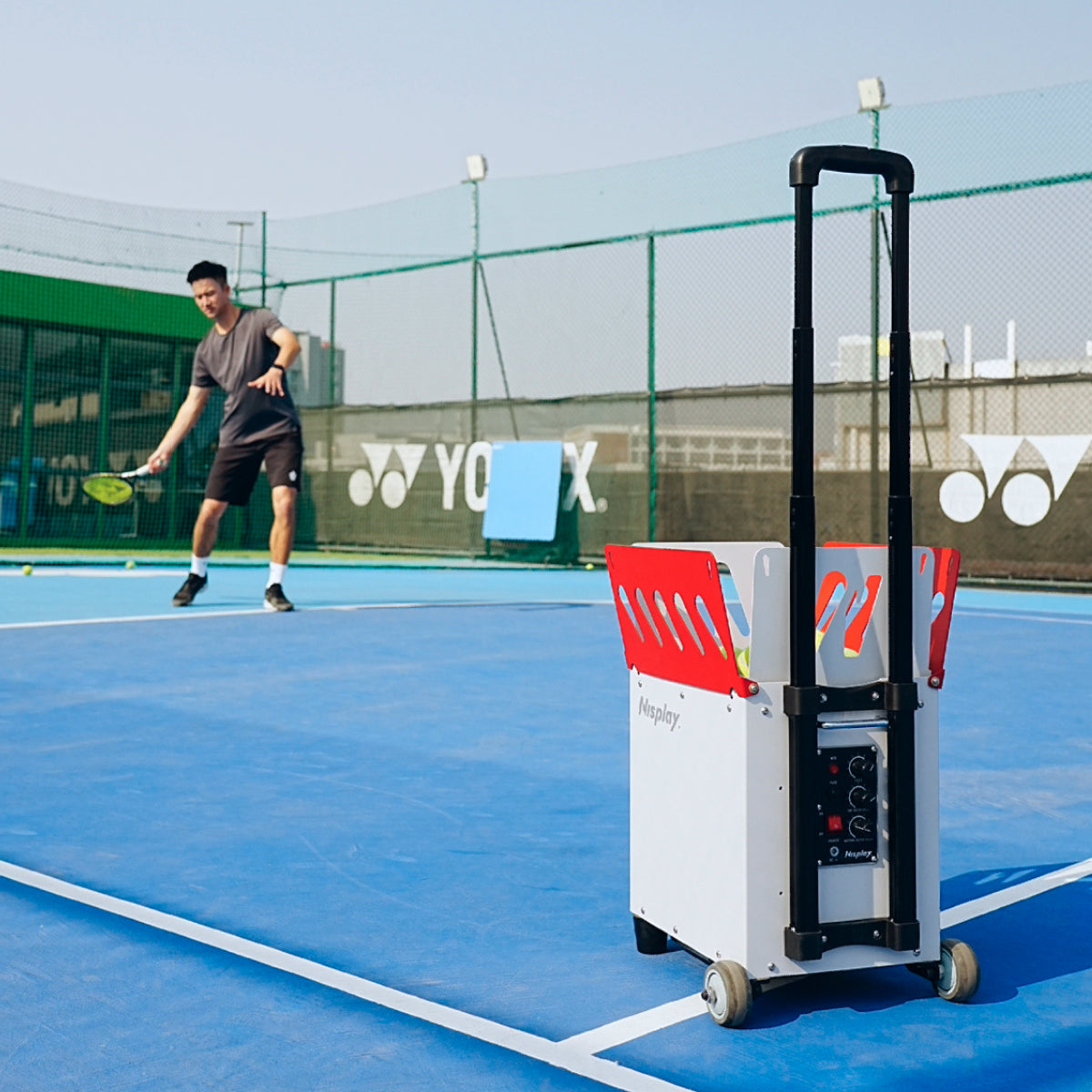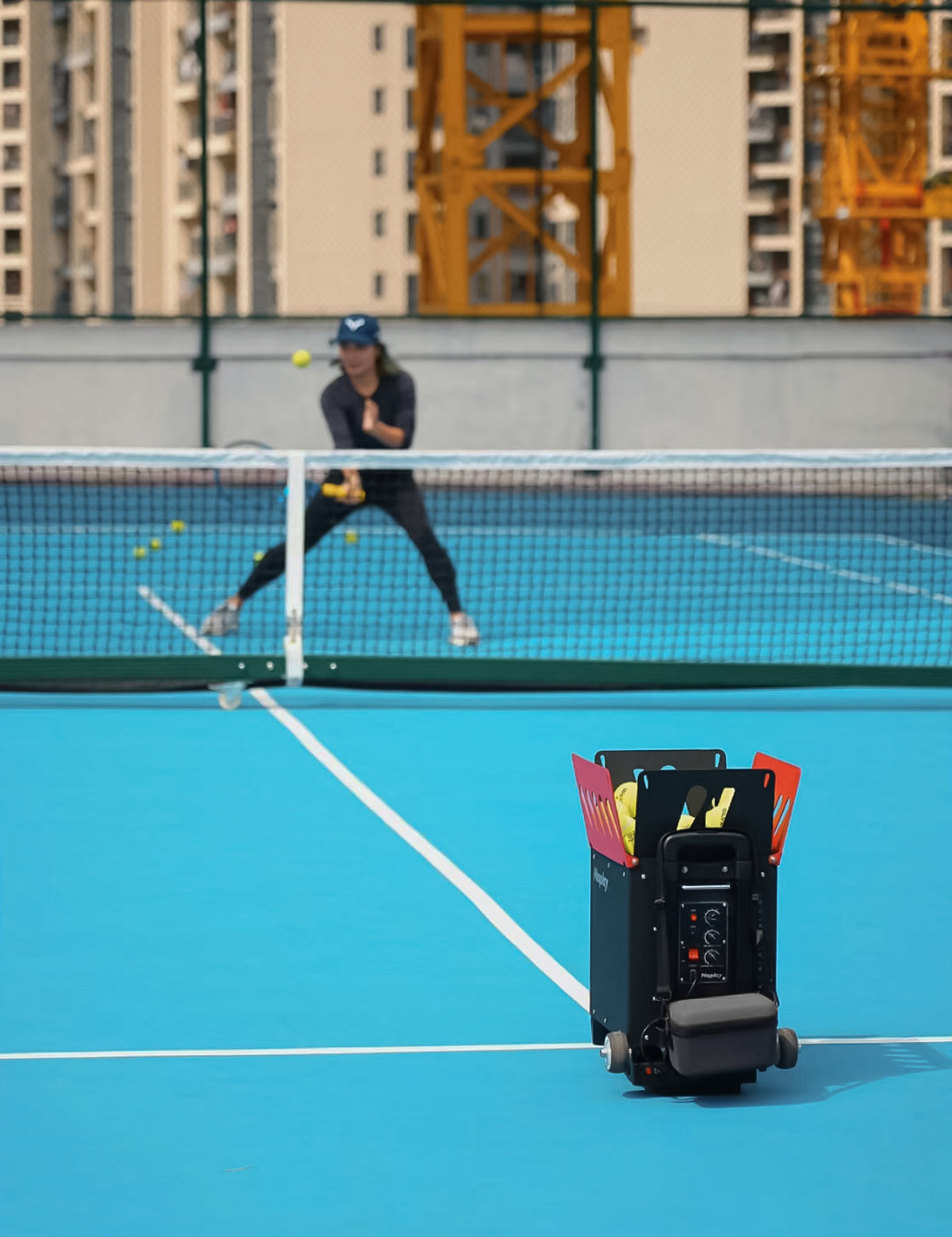Improving in tennis without a regular coach or hitting partner can feel challenging, but it’s entirely possible with the right approach. Here are three of the most effective solo training methods that will help you build consistency, improve technique, and strengthen your overall game.
1. Use a Tennis Ball Machine
A tennis ball machine, like the Nisplay L1, can simulate a consistent practice partner by delivering balls with precise speed, spin, and placement. Training with a ball machine is invaluable for players looking to work on everything from groundstrokes to volleys. Here’s how to make the most of it:
- Set Goals for Each Session: Decide what you want to focus on before you start. Whether it’s practicing your backhand, forehand, or volleys, specific goals help you measure progress.
- Vary the Ball Settings: Experiment with different ball speeds, spins, and heights to simulate real-game conditions. Practicing with a mix of flat, topspin, and slice shots will help you develop adaptability and shot control.
- Simulate Match Scenarios: Program the machine to alternate shots between forehand and backhand, or from baseline to net. This helps mimic point play, conditioning you for real rallies where you need to quickly adjust to each shot.
- Work on Footwork and Positioning: With a ball machine, you can drill your footwork by setting it to feed balls to different areas of the court. Practicing efficient movement will ensure you’re in the best position for every shot.

A ball machine is a powerful training tool because it allows repetition without the unpredictability of a partner, giving you the perfect opportunity to refine specific skills at your own pace. Check out Nisplay N2 ball machines: a compact, portable and versatile tennis ball machine designed for players at any level, with adjustable speeds, spin, and intervals, it offers customizable drills that help refine consistency, power, and accuracy on the court.
2. Practice Wall Drills
If a ball machine isn’t available, a simple wall can be an incredibly effective training tool. Practicing with a wall helps build quick reflexes, improve consistency, and refine your timing. Here’s how to maximize wall practice:
- Set Up a Target Zone: Draw or mark a target area on the wall to aim for. This helps you focus on accuracy and control, essential for developing consistency in real matches.
- Vary the Distance: Stand closer to the wall for faster volleys, then move further back to practice groundstrokes. This shift in distance sharpens both your net play and baseline control.
- Challenge Yourself with Continuous Volleys: Try to keep a rally going without the ball dropping. This helps train your quick reaction times and hand-eye coordination, which are essential for volleys and fast-paced exchanges.
- Practice Timing and Rhythm: To keep a steady rhythm, focus on hitting the ball with even intervals, simulating the timing of a real rally. This can also help you develop muscle memory for consistent strokes.

Image credit: Intuitive Tennis
Wall drills may seem basic, but they build essential skills like control, consistency, and focus. Plus, with a wall, you don’t need much space to practice effectively.
3. Shadow Swings and Footwork Drills
Working on footwork and shadow swings—practicing your strokes without a ball—may feel unconventional, but these drills build solid foundations in movement and technique. Here are some ways to incorporate shadow swings and footwork drills into your routine:
- Perfect Your Swing Technique: Practice each stroke slowly to refine form. Visualize each step: the backswing, contact point, and follow-through. Focusing on these fundamentals helps ingrain correct technique, which can be hard to adjust mid-rally.
- Footwork Patterns: Work on essential footwork patterns like the split-step, side shuffle, and quick recovery steps. Tennis is a game of constant movement, and good footwork keeps you balanced and ready to react.
- Incorporate Agility Drills: Exercises like ladder drills, side-to-side hops, or sprint-stop routines improve agility and reaction time. These drills increase your ability to reach difficult shots and adjust to different court positions.
- Simulate Match Situations: Imagine you’re playing a real match while practicing footwork and shadow swings. Visualize different scenarios—an incoming high shot, a low slice, a fast return—to make your movements instinctive.

Shadow drills are ideal for solo practice because they don’t require equipment and help you build muscle memory and footwork without distractions. Perfecting these basics will help you play more consistently and with better form.
Solo Tennis Practice is Powerful
Solo practice builds self-discipline and strengthens specific areas of your game that sometimes get overlooked in a group setting. By incorporating these three methods into your routine—ball machine drills, wall practice, and footwork drills—you’ll be able to improve consistency, refine technique, and develop crucial skills at your own pace.
Consistency in training, even without a coach or partner, can make a significant difference in your game. Embrace these solo practice methods, and watch as they translate into better court performance and confidence in match play.





